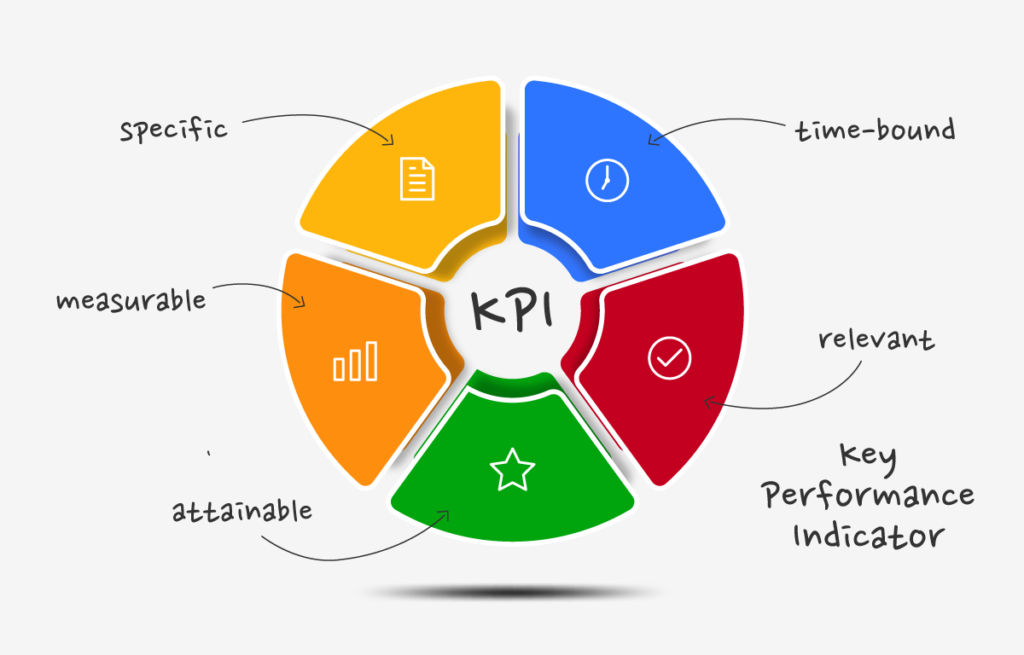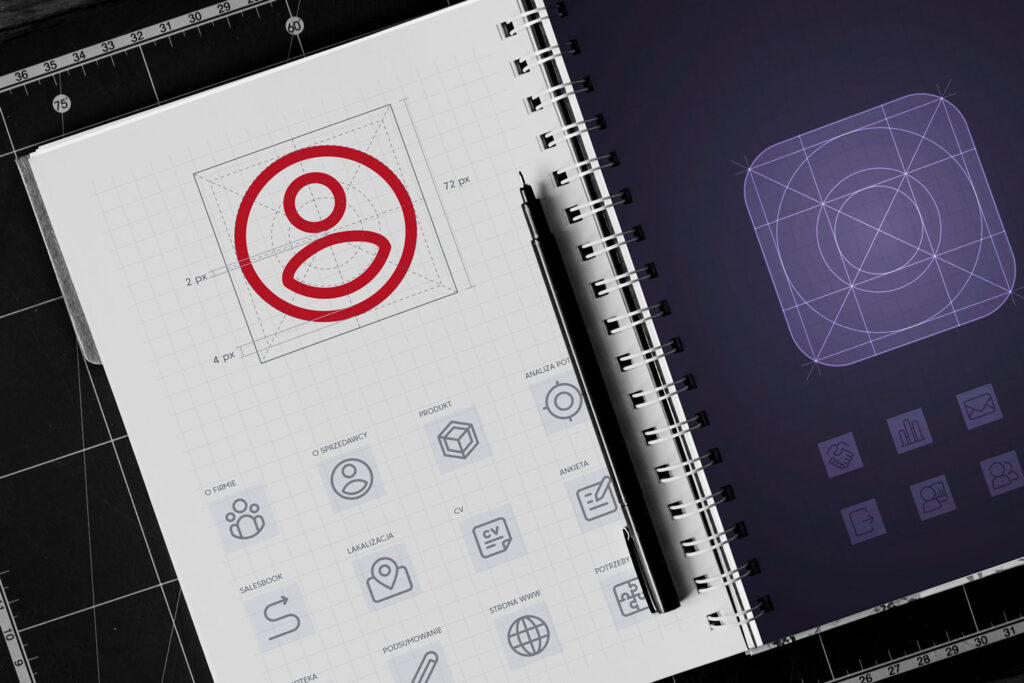The Shop module in Salesbook. Comprehensive organization of sales and order processing

Thanks to the Shop module in Salesbook, you can simply organize and automate your work that deals with creating orders and their processing. You can always check the list and status of orders as well as the stock level. What is more, you can divide your products into suitable categories. As a consequence, customer service will be easier.
How does the Shop module work?
If you run your business, you realize how long it takes to complete all administrative tasks. The Shop module will help you organize administrative issues and enables you to keep records of sales. It is also responsible for sales automation.
The structure of the model is intuitive. You can view your products by their features, categories, producers. or distributors.
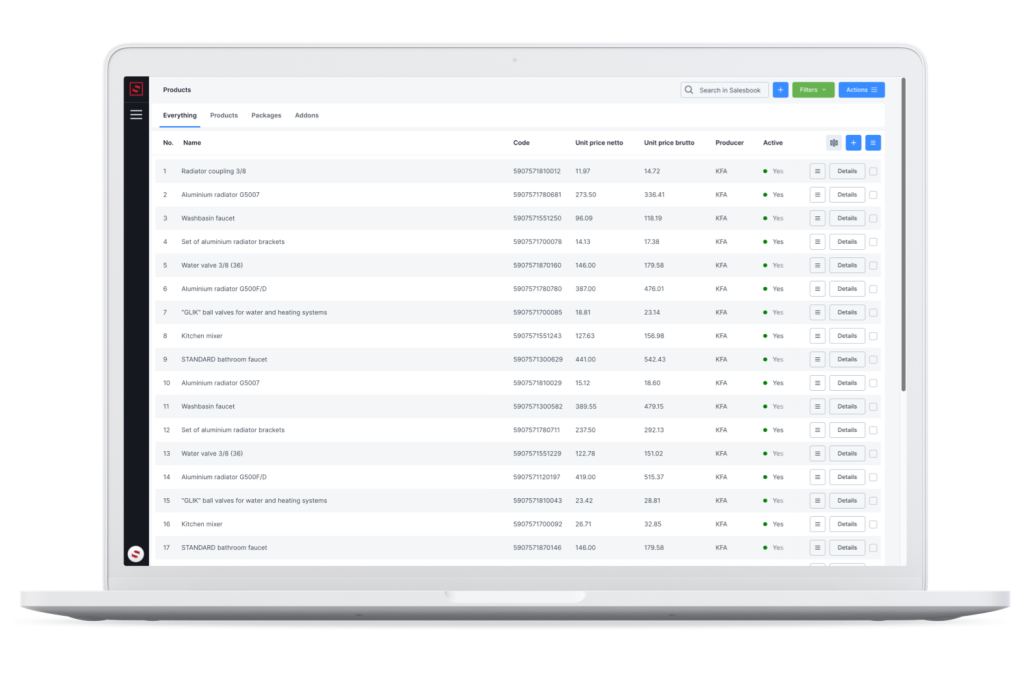
It is not difficult to add products to your shop. You can add them one by one or import them with pictures from the file.
By adding a given product you can give it a name, code, category, and producer. Thanks to this, the system will put it in the right place and you will avoid chaos in your shop.
You can also add photos, features, or discounts. Everything is available in one place which means that you do not have to type all the information into different tabs.
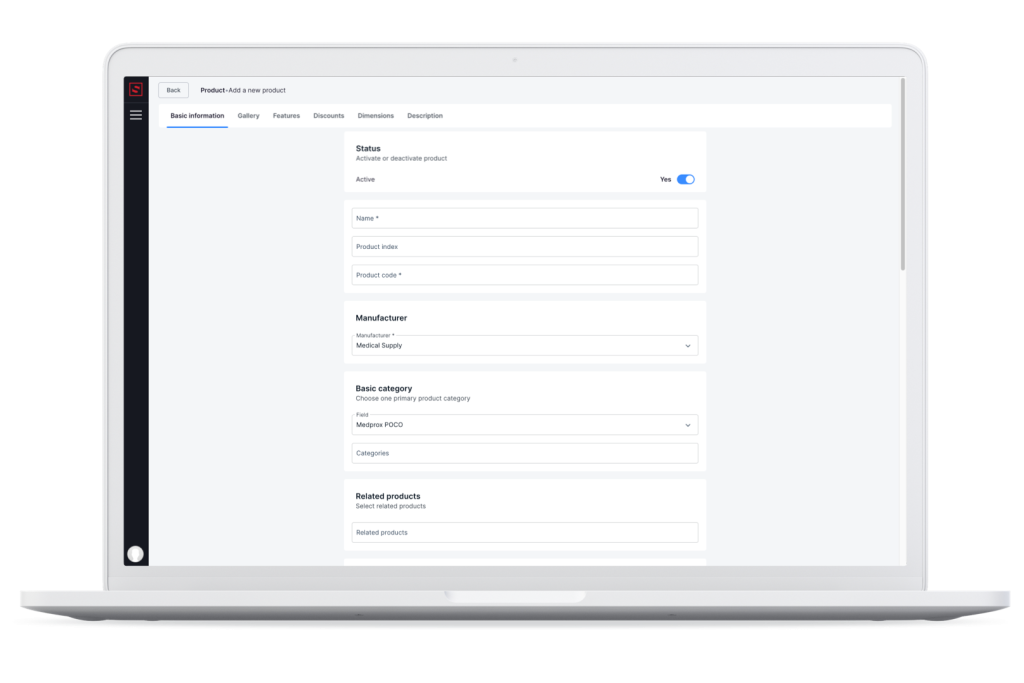
Easy access to data
It is good to add as much information as it is possible. If you add many details, you will be able to use filters and find quicker a given item.
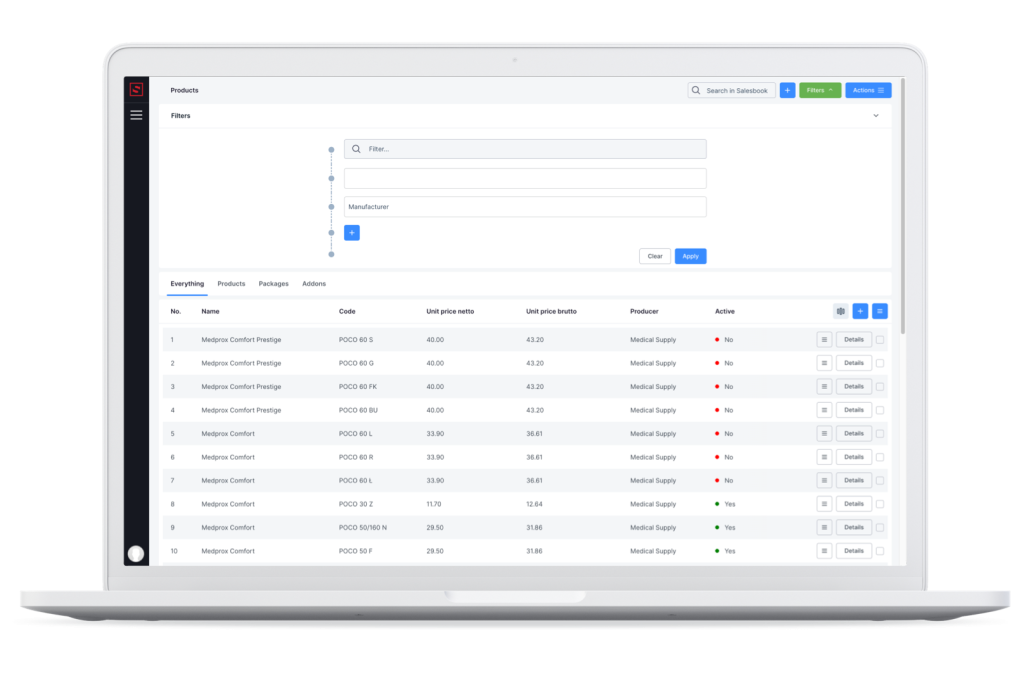
The list of all items is in the tab Products, and you decide what information is visible as the first one.
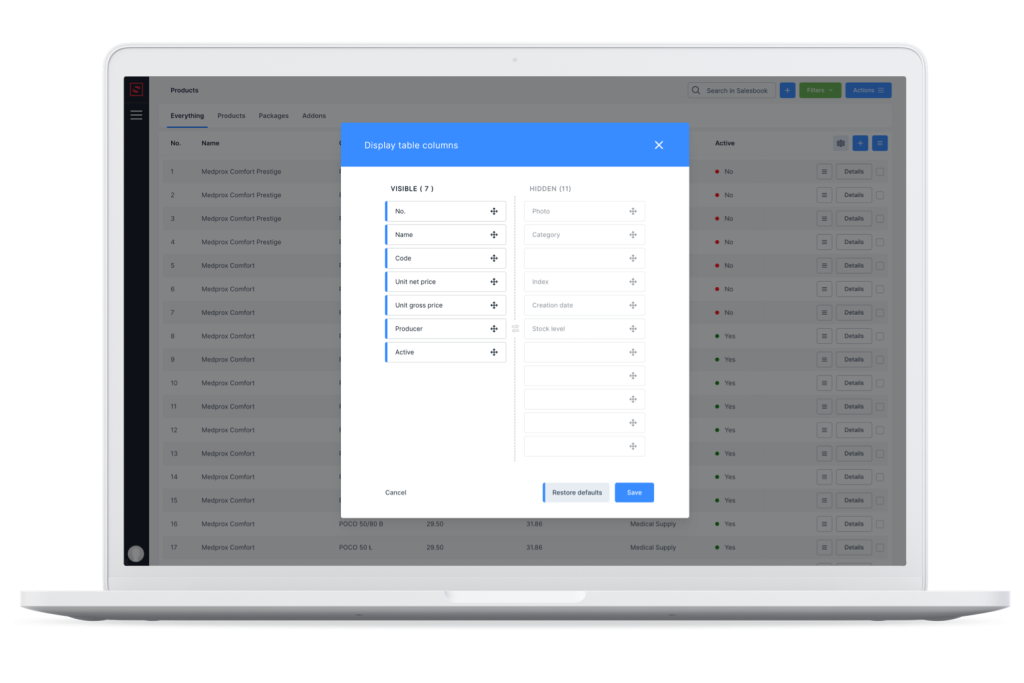
You do not waste your time deleting products that will be unavailable for some time.
So, you just have to change the status of products into Inactive, and after some time into – Active. It allows you to monitor your assortment and manage your shop in accordance with what is still present on a market.
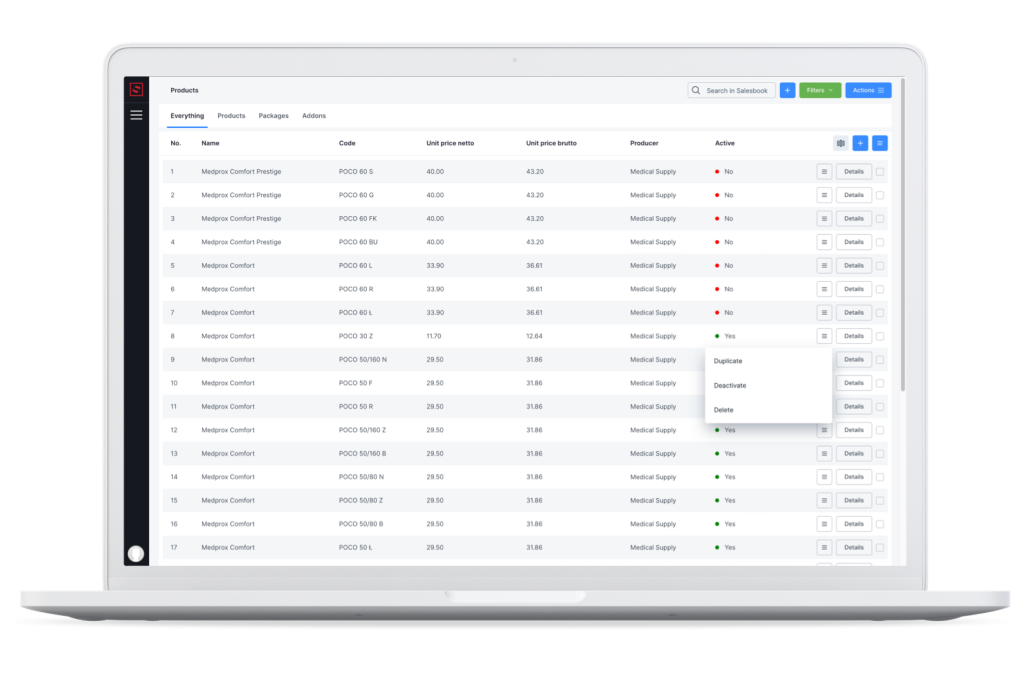
Flexible approach to your needs
In this module, you can assign defined categories to given products. Thanks to this, your shop has a logical structure for everyone responsible for its running. You can decide which elements of Categories matter to you and will be visible.
What is more, you can add subcategories and products. You have access to all details necessary to provide professional customer service. For example, you always see the current number of products and if they are available.
You also have the information on which products are synchronized with the app and visible on a tablet during a direct meeting with a client. Moreover, you see which goods are on special offer. All data in your CRM system make it easier for you to plan sales.
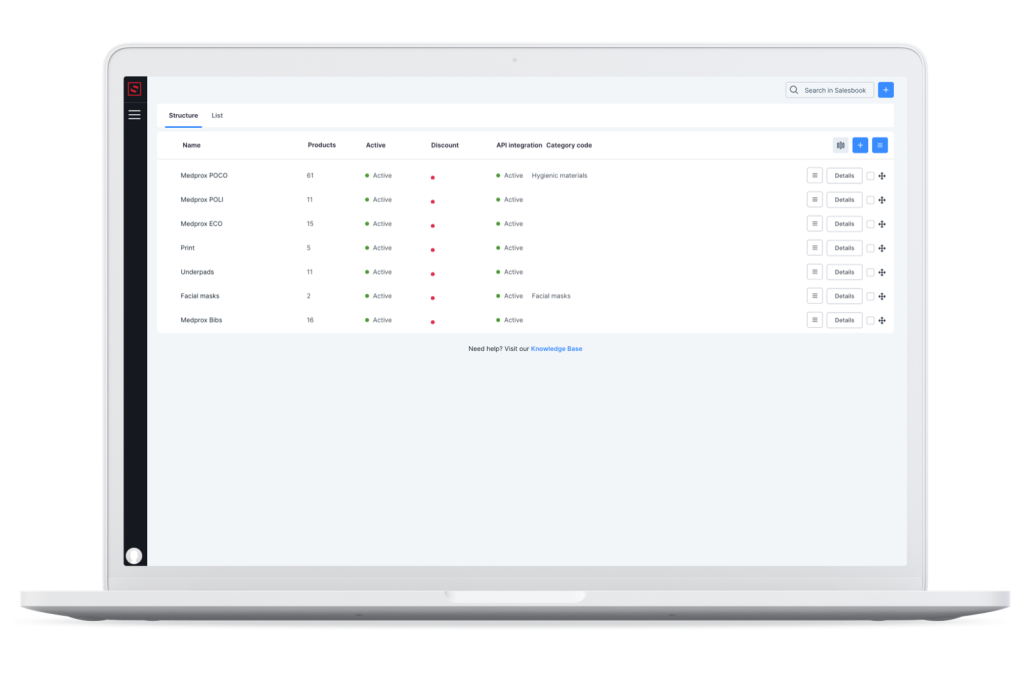
You can filter your assortment by selecting producers – you know how many products are made by a given producer or which are on special offer.
Useful features
You should also check the tab Features which can be very useful. Let us assume that you have a customer who does not know what to buy but can list some features of a product that they would like to purchase. By checking the tab Features, you can easily find a suitable product.
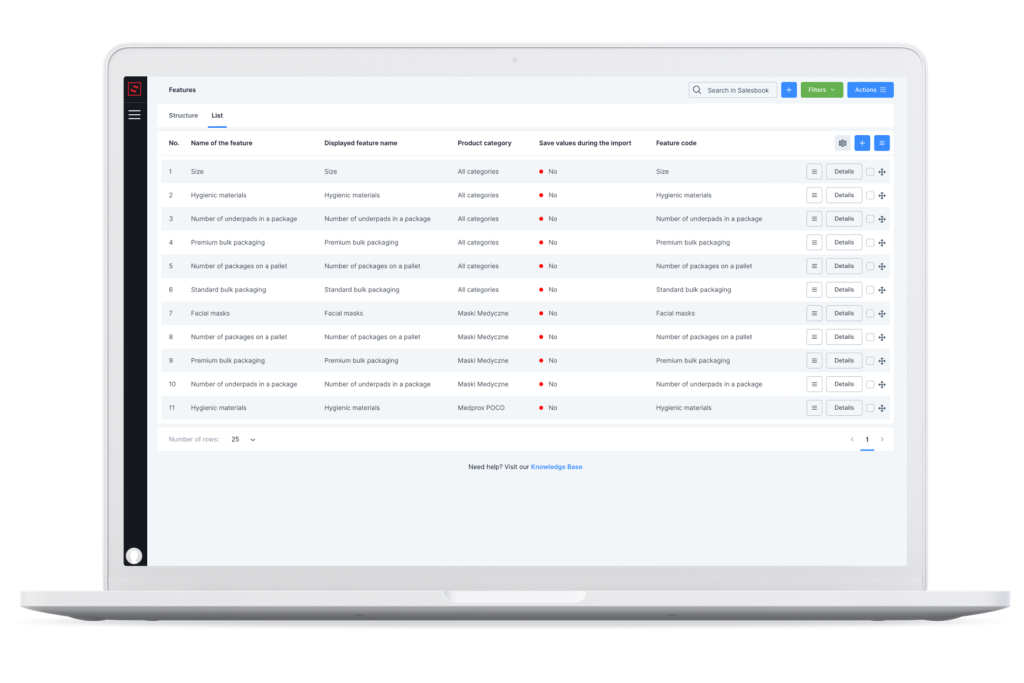
In the Shop module, you can complete orders, give them suitable numbers and know their value. Thanks to statuses, you know which of them are new, packed, or sent. You can also see the details inside a given lead to check the cooperation with your customers.
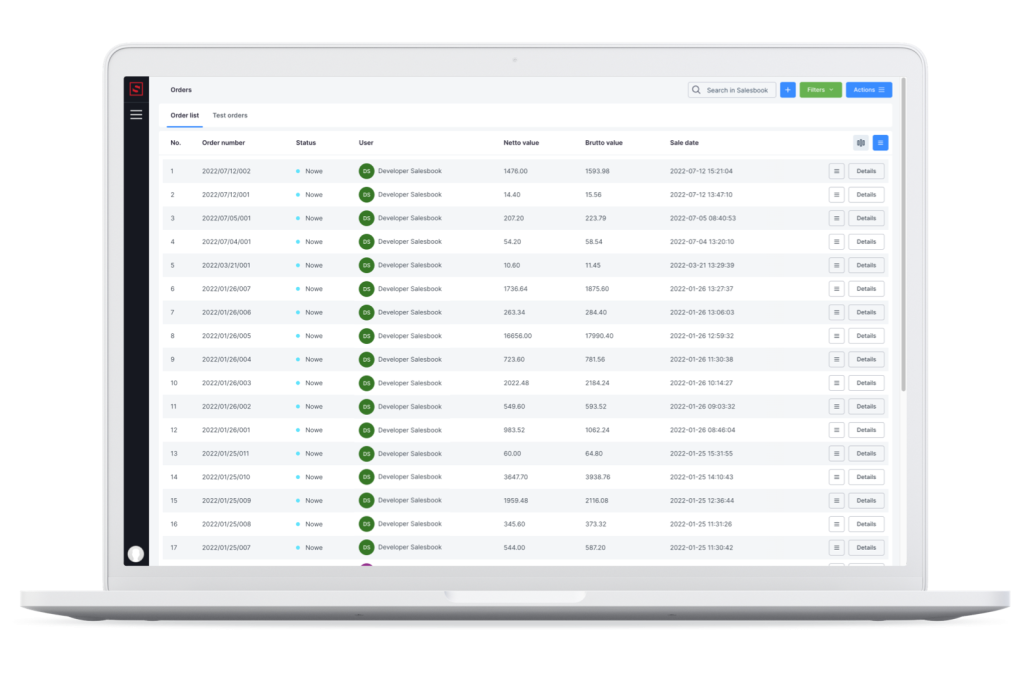
In the Shop module, you can find other important information, such as price lists that you can import into the CRM system from an Excel file. You have complete knowledge of which products and customers are assigned to a given price list. Thanks to this solution, you will always know what price is suitable for your clients and not make any mistakes.
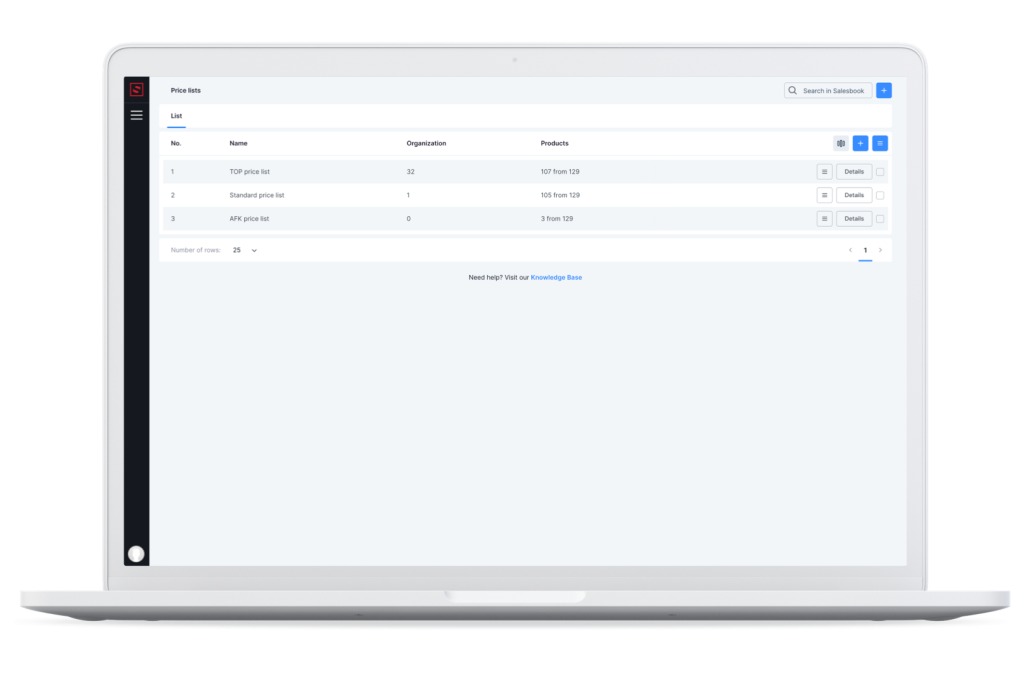
Your customer’s list is also available in the Shop module. You can add new clients and modify the list.
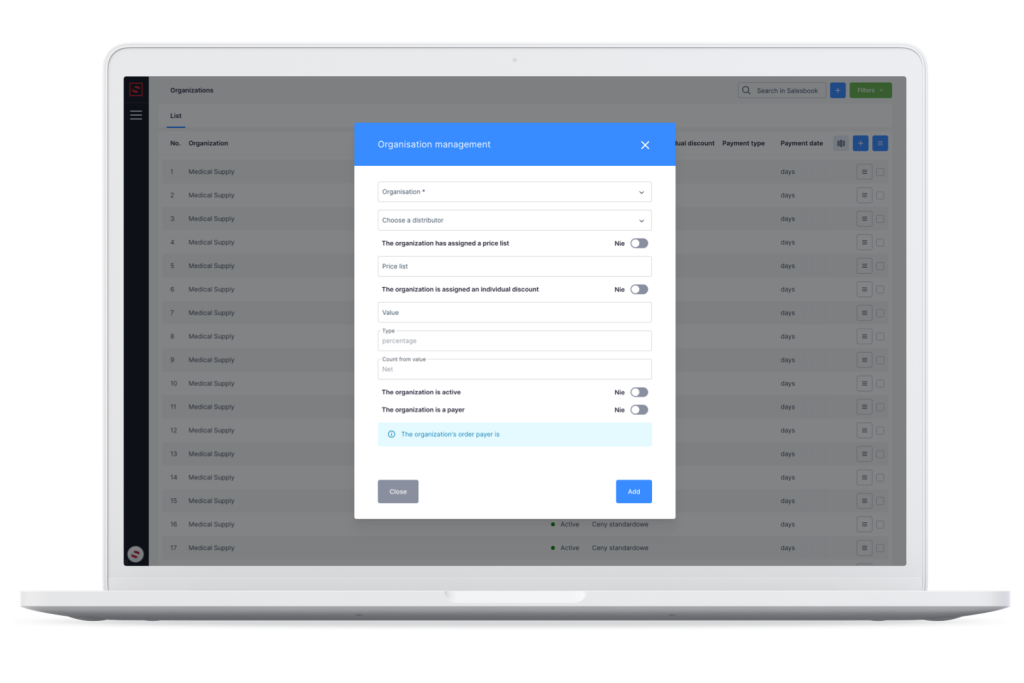
The next advantage of this model is the ability to manage discounts. You just have to set the value of the discount and the term of its validity. Thanks to the system, you will not miss this date.
The implementation of the Shop module helps organize the work of your team. Its simple structure allows you to manage orders and customer service. Moreover, it can boost sales processes and affect an increase in sales.
Want to see how a shop module from Salesbook will support your business?
If you want to know how the Shop module works, sign up for the free demo.
Table of Contents




